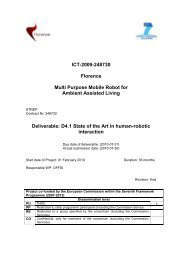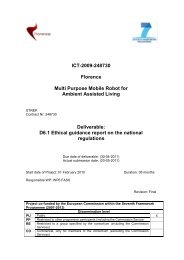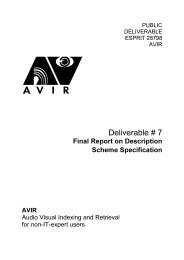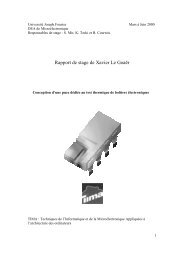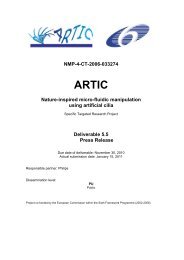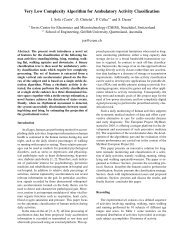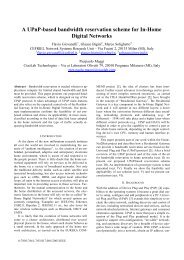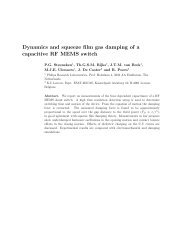User Interface Service Software Developerís Guide - Hitech Projects
User Interface Service Software Developerís Guide - Hitech Projects
User Interface Service Software Developerís Guide - Hitech Projects
You also want an ePaper? Increase the reach of your titles
YUMPU automatically turns print PDFs into web optimized ePapers that Google loves.
January 2008<br />
Public<br />
parameters. Then the entire speech interface is adapted to those preferences (in case of no<br />
such user exists or the UMPS is not accessible the default settings are used). Then the<br />
IVoiceIO::interact() is called to perform a simple interaction step. In case of success<br />
recognition and understand the method finish returning a result similar to the<br />
IVoiceIO::ListenTo<strong>User</strong> method. In case of error situations an error-handling sub-dialogue is<br />
initiated: the notUnderstoodPromptURL or noInputPromptURL prompt is synthesized and<br />
played and a new dialogue cycle starts until there is a success recognition or the maximum<br />
number of totalRepeats reached. The same process takes place in case there is a valid<br />
speech input and recognition but the recognition confidence is bellow a threshold defined by<br />
the confidenceLimit input parameter.<br />
Example<br />
String result = interactEH(“my<strong>User</strong>”,”myApp”, “mySession”,<br />
“C:\\MyApp\\ApplicationResources”,” GetAction.grxml”, “command”,<br />
“What_to_do.txt”, “no_input.txt”, “no_understood.txt”, 3, 60);<br />
In this example the service will prompt user with What_to_do.txt prompt and try to recognize<br />
and understand his input against GetAction.grxml grammar. If NOINPUT situation occurs the<br />
system will synthesize and play the no_input.txt prompt and restart the dialogue from the<br />
begin. Similarly in case of NOMATCH or low confidence the system will synthesize and play<br />
the no_understood.txt prompt. The dialogue will cycle for 3 times maximum and the<br />
confidence threshold is set to 60 (in a scale of 0-100).<br />
Important Note: In order the service to be able to adapt to different languages the grammar<br />
and the prompts are not passed with the entire path but with the simple filenames. Refer to the<br />
VoiceIO tutorial for a multilingual application structure.<br />
The format of the result is as described in IvoiceIO::ListenTo<strong>User</strong>BL method.<br />
1.3.2.6 Capability IVoiceIO::SpeakTo<strong>User</strong>()<br />
Syntax<br />
string speakTo<strong>User</strong>(string userID, string applicationID, string promptText, string promptURL,<br />
string language);<br />
Description<br />
This method is used for accessing Response Synthesis component. It requires userID and<br />
applicationID as input for setting up the proper resources as well as the string with the text to<br />
be synthesized or the path of the file containing the text of the response to be synthesized and<br />
played to user and the language of the prompt. It returns a string containing the path of the<br />
synthesized response.<br />
Example<br />
String myResponse SpeakTo<strong>User</strong>(“user01”, “EntranceManager”, “”,<br />
“C:\\EntranceManager\\responses\\intro_morning.txt”, “en-<br />
US”)<br />
In this example the SpeakTo<strong>User</strong> method is called from EntranceManager application for user<br />
user01. The system will synthesize the text contained in intro_morning.txt file.<br />
String myResponse SpeakTo<strong>User</strong>(“user01”, “EntranceManager”, “Good morning. How can I<br />
help you?”, “”, “en-US”)<br />
Amigo IST-2004-004182 28/114



